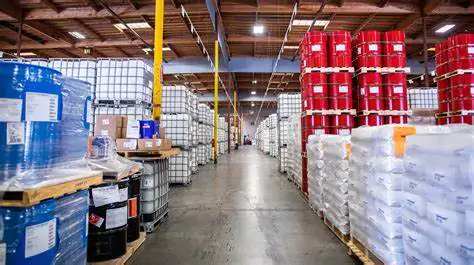Chemical Storage Ventilation
Fans for Chemical Storage Ventilation
Chemical Fans & Ventilation in Chemical Storage Units
Flammable substances and liquids are used in most laboratory and industrial environments, but storage of these materials improperly can pose a great risk to personnel, the public and property. There are a large variety of chemical storage cabinets available on the market, but best practice guidelines for COSSH chemical storage units indicated that a chemical store should be well ventilated. Those available on the market include both ventilated and non-ventilated units so it’s useful to understand the importance of effective chemical store ventilation.
When carrying chemically toxic air, the motor should be kept out of the air stream to ensure long lifespan and also to prevent the overheating of the motorised components. The duct work that is attached to the industrial fan should also carry the same of similar level of protection against corrosion as the fan scroll and impeller itself. In smaller storage units where the materials are non-corrosive and ventilation is more general, an axial fan can be used to ventilate, this should be certified for use in ATEX applications but in these instances the motor that is held within the air stream can withstand the nature of the gases, fumes or mists. It is worth noting that flammable gases are denser than air so they can accumulate at floor level. For this reason the ventilation system should be set up to ensure that these low level potentially hazardous gases can be extracted effectively.
When choosing a storage unit for the safekeeping of flammable substances, ventilation should be one of the key points to consider, and if not purchased as a ventilated unit, it is advisable to fit industrial chemical fans suitable for the purpose of ventilating the store. The need for ventilation and more specifically the type of fan that is required if determined by the hazardous nature of each chemical component. Temperature fluctuations in many chemicals can serve to increase vapour emissions and flammability so the need for ventilation becomes ever more apparent especially when a unit is situated in direct sunlight. Effective ventilation not only keeps chemicals appropriately cooled but also reduces this build-up of fumes.
As a general rule, any ventilation system should exhaust fume outside into the atmosphere and away from additional sources of ignition, by exhausting away this prevents surrounding rooms and people from inhaling or been affected by the harmful gases. Chemicals can be classed in two categories, flammable and corrosive. ATEX certified industrial fans are designed specifically for use within potentially hazardous or combustible environments and are manufactured with non-sparking components such as copper inlets, in other terms the flammable gases.
